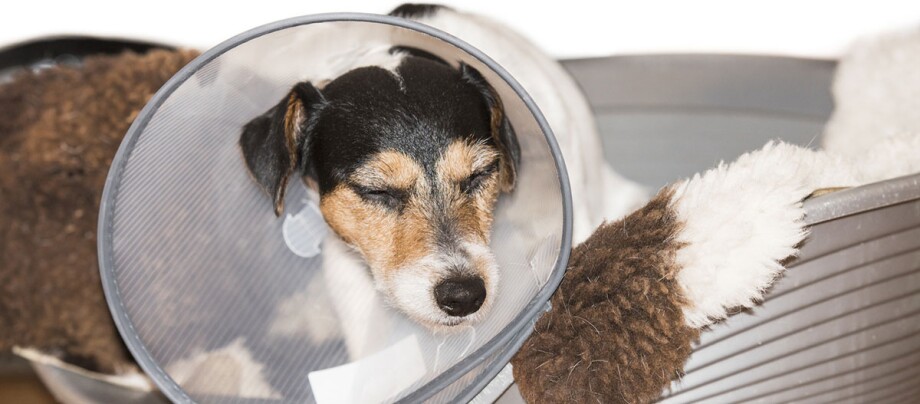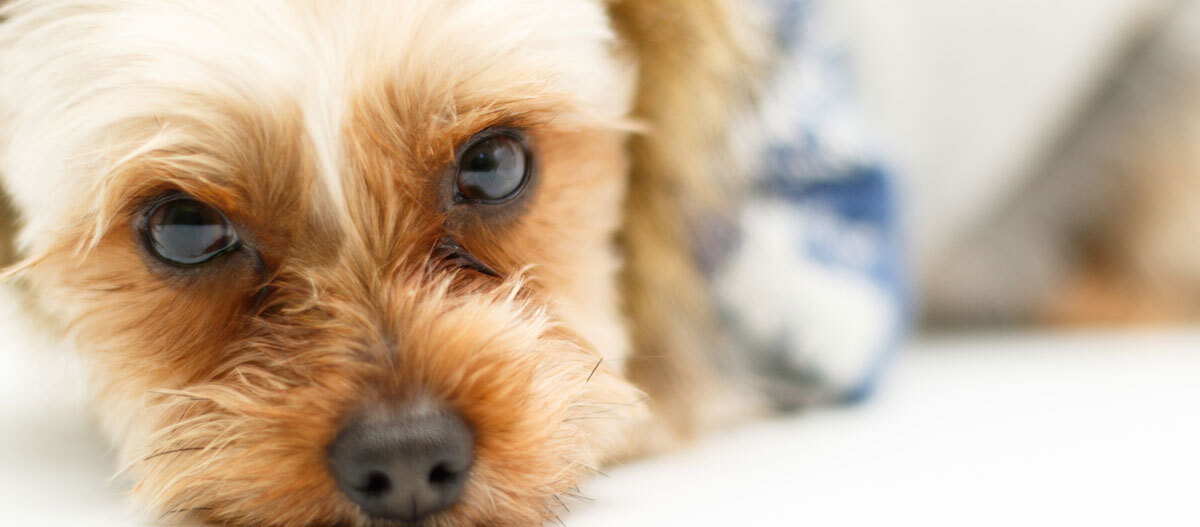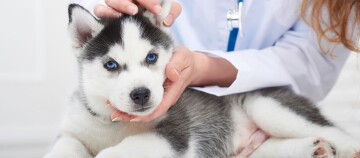Spaying and Neutering – Information About These “Standard Procedures”
20.03.2025 - Reading time: 5 minutes

Is your male dog is disobedient or dominant? Does he pull at the lead, mark every tuft of grass, run after every female, mount other dogs or get aggressive sometimes? For problems like this, many dog owners hope for a quick solution through castration. Castration has indeed become very popular in German veterinary practices for both males and females. It is considered a routine operation and its advantages are highlighted. Owners get the impression that castrating a dog is doing something good for them. At the same time, a critical view of the operation and its consequences is growing.
- What does “spaying and neutering” actually mean?
- What do you need to know before and after spaying or neutering your dog?
- What does spaying and neutering cost?
- When is the best time to spay or neuter?
- Pros and cons of spaying and neutering
- You don’t need to spay or neuter your dog right away: you can sterilise it first and then spay/neuter it at a later stage
Inform yourself extensively about castration in male dogs and female dogs here and read about the pros and cons, the cost and the procedure.
What does “spaying and neutering” actually mean?
Spaying and neutering are the veterinary terms for operations that remove a dog’s gonads (the testicles in males and the ovaries, fallopian tubes, uterus and cervix in females). It differs from sterilisation, where the vet merely occludes the vas deferens or fallopian tubes.
Spaying and neutering are definitive, irreversible surgical procedure which are performed under general anaesthesia and may have side effects.
Before such a surgery can be considered, the male or female dog must undergo comprehensive screening tests, including for parasites. The procedure may only be performed if the animal is in good health.
A quick summary of the procedure:
- The dog’s genital area is shaved, disinfected and covered with a sterile drape.
- The vet pushes the testicle up to the front of the scrotum and then makes an incision in the skin with a scalpel (one of many methods)
- The testicles are exposed along with the spermatic cord, which is tied off.
- The vet then separates and removes the testicles before releasing the spermatic cord and stitching up the wound.
In females, the procedure is more invasive.
- The abdominal region is prepared accordingly. A vertical incision is made which begins below the umbilicus and extends to the lower abdomen.
- The uterine horns are moved aside and the ovaries are tied off and severed one after the other. These incisions are sewn up with absorbable sutures.
- The vet may then put back the womb (uterus) and close the surgical site with several separate and non-absorbable sutures, but in most cases, the entire uterus is also removed.
The vet will remove the outer stitches after about ten days. The inner stitches dissolve by themselves after a certain time.
The dog wakes up from the anaesthesia after about one to two hours, but may remain dazed for quite a long time afterwards. It will be in pain and should not be left on its own. Make sure you give your pet the painkillers prescribed by the vet who will give you some to take home.
What do you need to know before and after spaying or neutering your dog?
Because neutering and spaying are performed under general anaesthesia, certain measures should be followed to minimise possible complications.
These are as follows:
- Your pet needs to have an empty stomach when you bring it in for surgery.
- Do not feed it for at least 12 hours (no meal the night before).
- On the day of the surgery, do not let your dog have a drink before the procedure.
After the surgery, do not take your dog for long walks until the internal and external wounds have healed completely. Keep your dog on a short lead to prevent stretching of the wound. Do not let the dog jump, even from the car seat. Check the wound daily to make sure it doesn’t become infected. In the meantime, male dogs should wear a cone to stop them from licking the wound, and female dogs should wear a special medi-shirt.
What does spaying and neutering cost?
The cost of neutering and spaying can vary widely depending on the vet or veterinary clinic. It is best to get several price quotes.
The cost of neutering averages 150 to 250 Euros. Since spaying females is a more extensive procedure, it is also more expensive.
When is the best time to spay or neuter?
Since the hormones produced in the testicles and ovaries control the psychological and physical development of dogs, it is strongly recommended that the animal only be spayed or neutered after it has reached puberty.

makotomo/stock.adobe.com
Sex hormones have effects on bone structure. Consequently, dogs which which have been castrated too early show a clear tendency to develop joint problems and hip dysplasia. Early castration is only indicated in certain exceptional cases (for example, abnormal sexualisation or aggression) and after thorough discussion with experts.
The duration of puberty in dogs depends on the breed and environmental factors and cannot be generalised. For example, large breeds of dog take longer to reach maturity.
You should not spay a female prior to her first heat cycle. In this way, you will avoid unwanted changes in her fur as well as lifelong childish behaviour. Early castration prior to a female’s first heat cycle is offered as a measure for the prevention of mammary tumours. You need to consider the pros and cons carefully.
Pros and cons of spaying and neutering
Many dog owners mistakenly see spaying and neutering as a proven way to quickly solve certain behavioural problems in their pet or to prevent certain cancers,
But what are the actual effects of spaying and neutering?
Spaying and neutering won’t solve the following problems:
- Disobedience
- Poor lead walking
- Dominance and aggression if not motivated by sex drive
- Breed-specific territorial and protective behaviour
What few dog owners know: once encoded in the dog’s brain, sexual behaviour cannot usually be corrected by neutering. If, for example, your dog mounts other dogs, there is a very high chance that this behaviour will continue after neutering. In this case, only professional training and behavioural measures will help.
Undesirable consequences of spaying and neutering dogs include:
- Obesity in around 50% of spayed and neutered dogs, with possible comorbidities (joint problems, heart and liver disease)
- Change in temperament due to lack of hormones (possibly lethargy, listlessness)
- Increased biting/aggressiveness towards other dogs, especially between female dogs
- Infantile (juvenile) behaviour if the dog is spayed or neutered too soon
- Changes in the coat, “puppy coat”, i.e. soft, dull hair in about 30% of cases, especially in females
- Incontinence, in about 50% of females, especially from larger breeds
- More frequent ear infections in about 30% of cases
Even the social behaviour of dogs changes: When together, male dogs will not be able to “smell” or classify another dog’s sex correctly, which can lead to significant errors in communication. Some castrated dogs will be “harassed” and mounted by their intact fellows.
The following positive effects can be seen with the castration of a dog:
- No reproduction
- No heat cycle of female dogs and no “false pregnancy” with the problems which are typically associated with this
- No hormone-related stress in male dogs
In addition to this, there is the hope that castration will reduce the risk of diseases such as testicular cancer and prostate problems in male dogs and uteritis and mammary tumours in females. Statistically, the risk of mammary tumours in intact females is around 2 per cent. The risk of this form of cancer will only be reduced if the female dog is spayed prior to its first heat cycle, that is to say at a very early stage.
You don’t need to spay or neuter your dog right away: you can sterilise it first and then spay/neuter it at a later stage
Sterilisation is a proven way of preventing reproduction in which a male dog or a female dog continues to be given hormones. Sterilisation can be surgically reversed.
A Suprelorin implant is a new method of castration. It is a castration chip which produces the effect of castration chemically by means of the active substance deslorelin and it is implanted under a male dog’s skin. It lowers libido, the testosterone level and reproduction for six to 14 months. This is enough time to test the effects of irreversible castration “on a trial basis”, as the side effects can be reversed.
The Suprelorin implant has (still) not been authorised for females, but it has already been tested.


